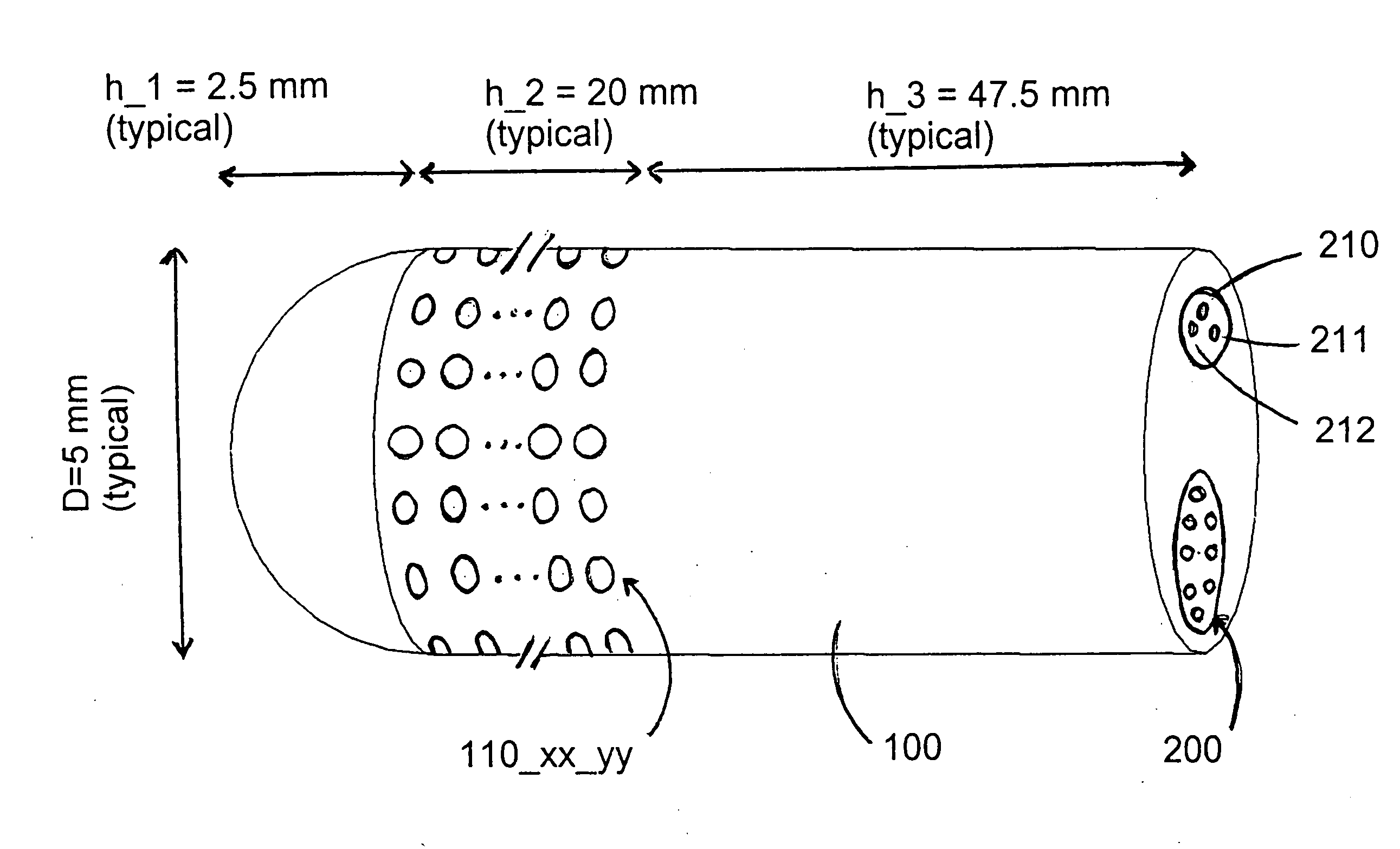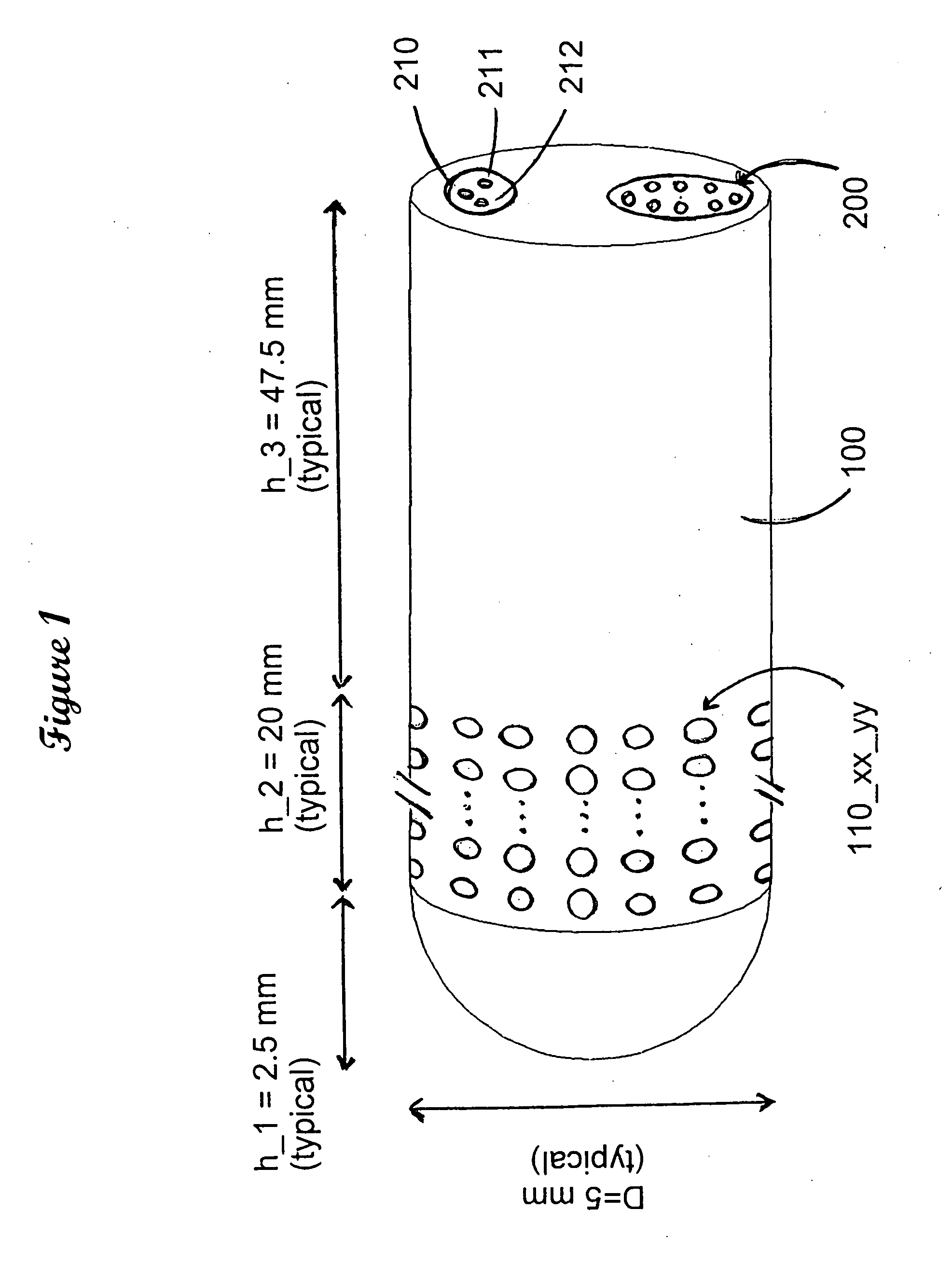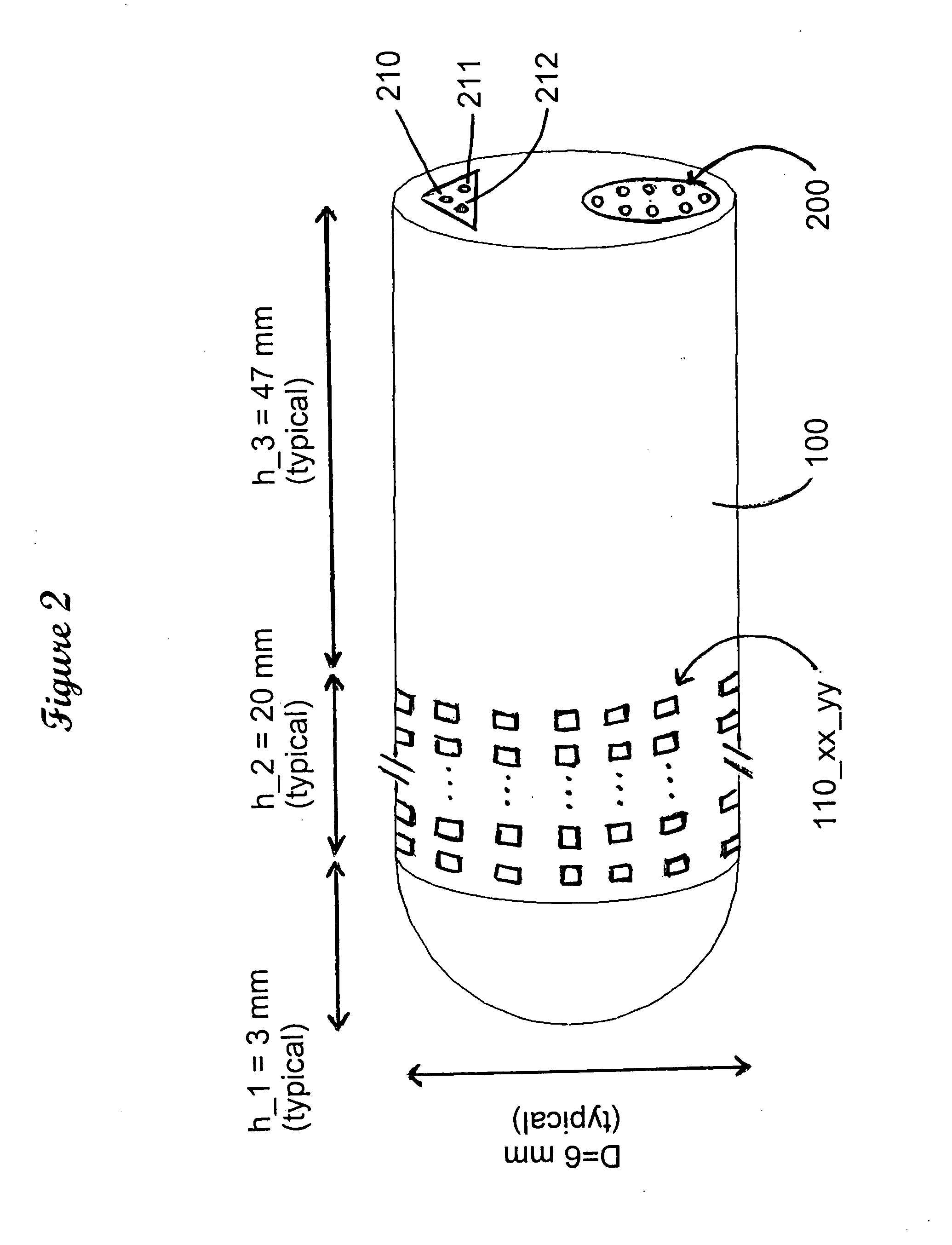Method and means for connecting and controlling a large number of contacts for electrical cell stimulation in living organisms
a technology of electrical cell stimulation and contact, applied in the field of cellular electrical stimulation, can solve the problems of reducing the success of dbs procedures, not optimal positioning, and many forms of parkinson's diseases
- Summary
- Abstract
- Description
- Claims
- Application Information
AI Technical Summary
Benefits of technology
Problems solved by technology
Method used
Image
Examples
main embodiment
[0098]For the disclosure of my invention I will use the example of deep brain stimulation (DBS), it being understood that the same method applies to other stimulators, with the modifications that are obvious to ones familiar with the art. A similar method also applies to measuring electrodes, that is, devices to measure the electrical signals in living organisms. A similar method also applies to bi-directional devices, which are capable of both reading electrical activity in the neurons and also capable of stimulating other neurons, or the same neurons after the measurements were made, which are very useful for electrical stimulation because the current state of the neurons can give indications of the location, type and level of electrical pulses to be applied.
[0099]I start with a succinct description suitable for electrical engineers, then follow with a detailed description for readers with non-electronic backgrounds. The problem is to deliver electric current to internal body part...
second embodiment
of My Invention. Operation of the Second Embodiment
[0142]To operate the second embodiment the user must start resetting all the latches to the off state, which he / she does with the latch off signal at wire_latch (not shown). He / she then starts selecting the first address for the stimulating pad with address decoder 830 he / she needs in the same way as is done with the main embodiment, e.g., with individually set switches, or with a decoding pad, or with a microcomputer or any equivalent way as known to the practitioners of the art, then, at the same time (concomitantly) the user also selects the address for one of the available connecting wires 211_zz which run inside the length of the picafina of my invention, which carries the voltage (current) that he / she wants to use on said particular stimulating pad. Both addresses (200 and 201) have to be selected concomitantly because in this second embodiment the address decoder 830 that selects a particular surface measuring pad also enable...
third embodiment
of My Invention. Description of the Invention
Description of Second Embodiment—Short, Electrical Engineering Version
[0143]A third embodiment of my invention is the extension of said second embodiment using some of the power (voltage) wires as signal measuring wires. In this embodiment some of the wires 211 that set different voltages for said pads 110 are use as disclosed in said second embodiment, connected to a battery or other voltage (or current) source, while some of said wires 211 are connected to a voltmeter or some other measuring instrument. In this third embodiment the picafina of my invention is used not only to put a current on some neurons (stimulation) but to make measurements of the voltages at other neurons as well. Typically these two functions are separate but there is no reason to be so other than the prior art impossibility to have enough pads available for both. In this third embodiment said switch 810 is designed with an input to latch its on-state (not shown), ...
PUM
 Login to View More
Login to View More Abstract
Description
Claims
Application Information
 Login to View More
Login to View More - R&D
- Intellectual Property
- Life Sciences
- Materials
- Tech Scout
- Unparalleled Data Quality
- Higher Quality Content
- 60% Fewer Hallucinations
Browse by: Latest US Patents, China's latest patents, Technical Efficacy Thesaurus, Application Domain, Technology Topic, Popular Technical Reports.
© 2025 PatSnap. All rights reserved.Legal|Privacy policy|Modern Slavery Act Transparency Statement|Sitemap|About US| Contact US: help@patsnap.com



